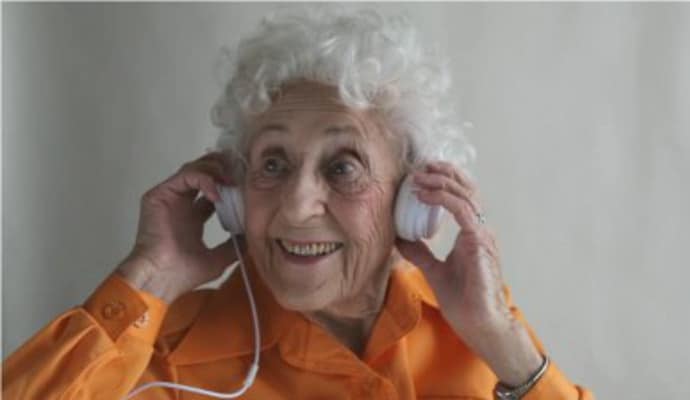Seniors with Alzheimer’s or dementia often enjoy and benefit from creative activities like art that allow non-verbal expression. Creative activities also help reduce agitation and boost mood as well as give a sense of accomplishment and purpose.

Art therapy stimulates the brain
Art projects are a fun, relaxing way for people of all ages to express their creativity, but they’re particularly valuable for seniors with Alzheimer’s or dementia.
Even though nothing will cure dementia, art therapy stimulates the brain in a multitude of ways. It can stir dormant memories and sometimes even encourages speech.
Art can also create a sense of accomplishment and purpose, while also providing an opportunity for nonverbal expression.
Studies have shown that art therapy activities even help boost cognitive function in various areas of the brain and enhance communication, brain function and social interaction in people with dementia.
The benefits of art therapy for dementia are immediately noticeable. Participants show both cognitive and behavioral improvement, plus an increase in confidence.
Create good moments, days, and hours with art therapy
The goal of art therapy is to create “good moments, good hours and good days,” as Ruth Drew, director of family and information services for the Alzheimer’s Association, says.
Art therapy for dementia can spark non-verbal seniors to smile, laugh, speak, or move. It’s incredible to see someone who has extensive impairments come alive again.
The most effective forms of art therapy are those that are built on personal passions and memories.
There’s no “one size fits all” approach to art therapy. What’s most important is considering your older adult’s current abilities, preferences, and what’s feasible in their living space. The idea is to set them up for success and enjoyment, rather than overwhelm or frustration.
Consider a wide variety of creative activities
Today, popular activities often go beyond the traditional drawing on paper.
Seniors enjoy sculpting with clay or dough, watercolor painting, paint by number projects, charcoal or pencil drawing, making cards, creating jewelry, participating in community art projects, and more.
For example, using modeling clay or dough (we love these bright colors) to create works of art is a wonderful way to engage someone with dementia.
It stimulates the senses, relieves stress, and helps boost hand strength. Many people also feel a great deal of pride and accomplishment in their creations.
Recommended for you:
- Activities for People with Dementia: 10 Fun, No Fail Ideas
- Beautiful Coloring Books for Seniors
- Music Has a Powerful Positive Impact on Seniors with Dementia: Alive Inside
Guest contributor: Nicole Hanna, Executive Director, Vineyard Henderson. With over 20 years of leadership experience with an expansive skill set in dementia education, training and support, long-term care, nursing, senior fitness and rehabilitation, Nicole brings expertise in operational efficiencies and leadership development, while prioritizing the quality care and happiness of her community.
About the Author

Connie is the founder of DailyCaring.com and was a hands-on caregiver for her grandmother for 20 years. (Grandma made it to 101 years old!) She knows how challenging, overwhelming, and all-consuming caring for an older adult can be. She also understands the importance of support, especially in the form of practical solutions, valuable resources, and self-care tips.













An Art Therapist is not required for art activities at home. It is not constructive to deter home careers from engaging the patient with play dough, colored pencils or coloring books. All that is required is a few simple materials from Walmart or $ Store , sitting at the table (covered with wax, freezer paper or plastic wrap helpful to person cleaning up) WITH the person- dont just hand them the materials. Suggest and participate in the activity too- criticism free. Play some soft jazz or classical music. No negatives allowed – just the joy of making marks or shapes. Talk about how fun doing these things as children was for you and ask patient about what they enjoy. Laugh and make it fun.
Thanks for these fun suggestions! It’s wonderful to be able to have fun with different kinds of art at home.
The article above also shares suggestions for how families can engage older adults in fun art activities at home – an “art therapist” is never required. The article aims to bring awareness that this service exists (for those who are interested) and how art can be fun and beneficial.
I am looking for an art instructor to help set up an art instruction for a normally very competent and normally highly talented woman, who is in the early stages of Alzheimer’s. She needs mostly help in setting up things & getting started.
You might try contacting your local senior center to find out if any of their art instructors would be interested in this type of job.
Although art in and of itself is very therapeutic and many benefits listed here are true, there is a major problem with this article. Not once does this mention an art therapist is required to be present for art therapy to take place. Art therapists are clinically trained at the masters level to facilitate expression, provide cognitive stimulation, manage behaviors and emotions, work through grief, etc., with keen knowledge in choosing specific materials within a session to address specific goals. Art therapists are required to be board certified and many states require a license.
This article addresses the benefits of artistic expression for people with dementia and uses the term “art therapy” in a general sense. The important point is that engaging in artistic activities is a great non-drug way to help people with dementia by boosting their mood and helping them feel a sense of accomplishment and satisfaction.